4WD Porsche EV from year 1900
Article by James Herne
In 1889 or 1890, at the age of 14, Ferdinand Porsche was already performing experiments with electricity. For example, he fitted ice skates with battery-powered lights. Ferdinand’s acumen in electricity increased to such a degree that by 1893 his family home became the first to have electric light in Maffersdorf (today Vratislavice nad Nisou). Porsche began working at the Egger electrical equipment company (which later merged into Brown Boveri, which later became ABB that we know today). During the time at Egger, for personal use, Porsche built a bicycle with battery and electric wheel-hub motor!
1898 Egger-Lohner Porsche P1 electric carriage
In 1897 Porsche had started to work also for Lohner horse carriage company and in 1898 an electric carriage called “Egger-Lohner” was engineered by F. Porsche. He called it P1 (Porsche 1).

The P1 was taken to the streets of Vienna on June 26, 1898. The first practical test for the P1 was on September 28, 1899, at the Berlin motor show where a competition for electric vehicles was held. It covered a total distance of 40 km (25 miles), with tests on inclines, on the 12 km (7 miles) race track and measurements of electricity consumption!
P1’s electric drive offered an output of 3 horsepower and in overloading mode, for short periods, up to 5 hp. The speed was regulated via a 12-speed controller. With three passengers on board, Ferdinand Porsche steered his P1 across the finish line as the winner.
The printed ad at the 1899 Berlin international motor vehicle exhibition presented the following information about the Egger-Lohner electric vehicle:
* International Electric Automobile Competition 1899, 1st Prize
* International Motor Car Exhibition 1899, Golden Medal
* Power: 3-5 HP
* Battery: 44 cells, 110-120 Ah, 550 kg (1200 lbs)
* Driving range: 3-6 hours on a flat road
* Speed: up to 25 kmh (15 mph)
* Brakes: electrical and mechanical
* Total weight: 1350 kg (3000 lbs)
* Delivery time: 3 months
1899 Egger-Lohner Porsche Mylord Coupé
The next Porsche-engineered vehicle was the Mylord Coupé which had the battery pack under the floor like modern EVs.
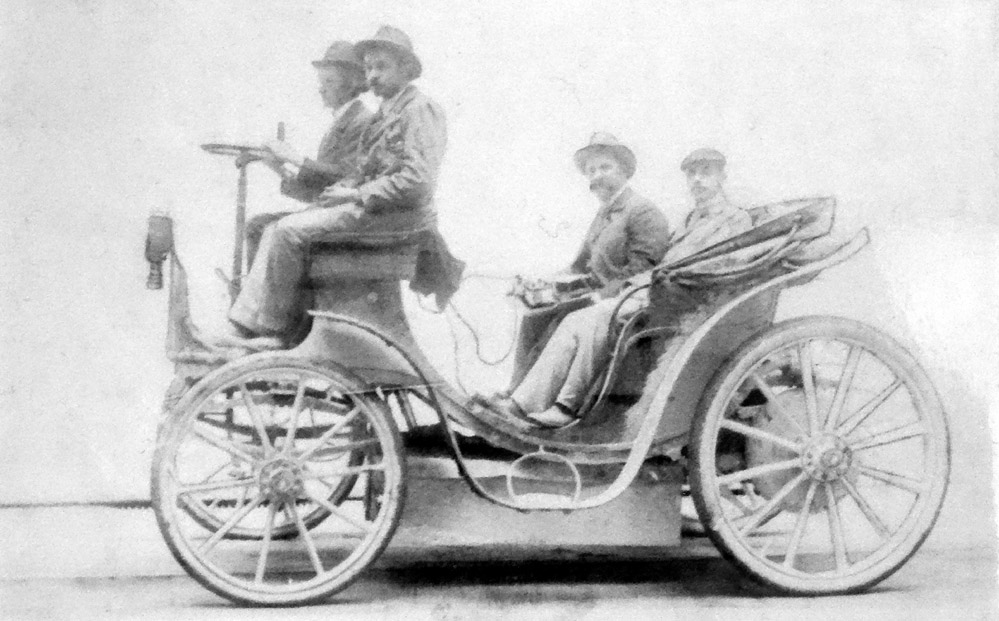
1900 Lohner-Porsche electric car with wheel-hub motor
In 1899, Lohner became fascinated by Porsche’s wheel-hub motor design.
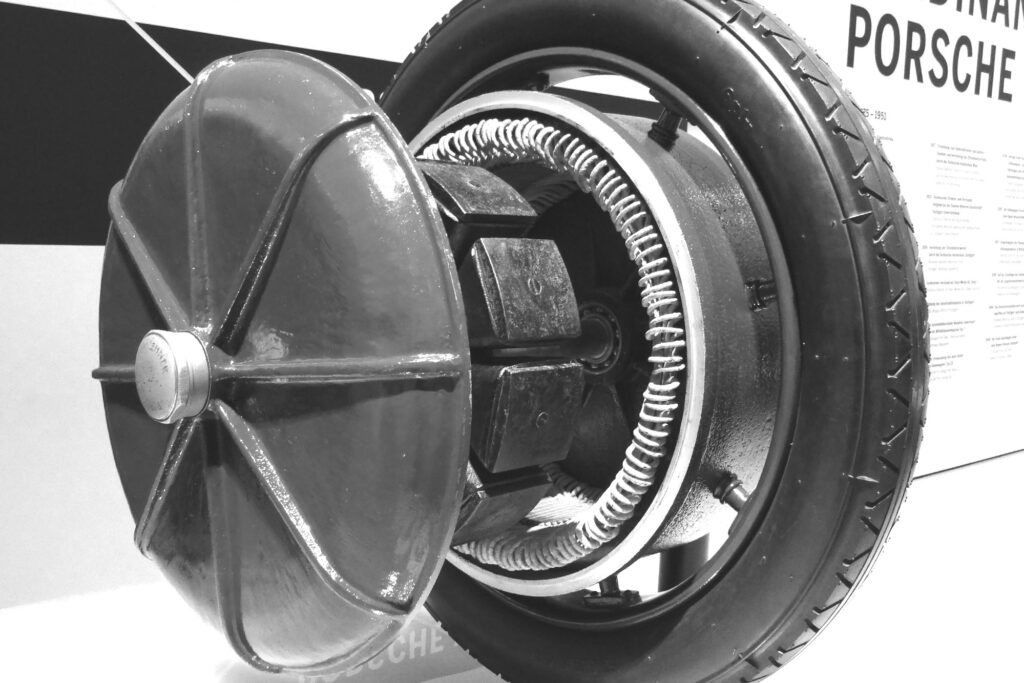
In 1900, the Lohner-Porsche – a vehicle powered by Porsche’s electric wheel-hub motors – was celebrated as an epoch-making innovation at the world trade fair in Paris. Ferdinand Porsche was 24 years old and this was the first car advertised with his name. The first Porsche was electric.

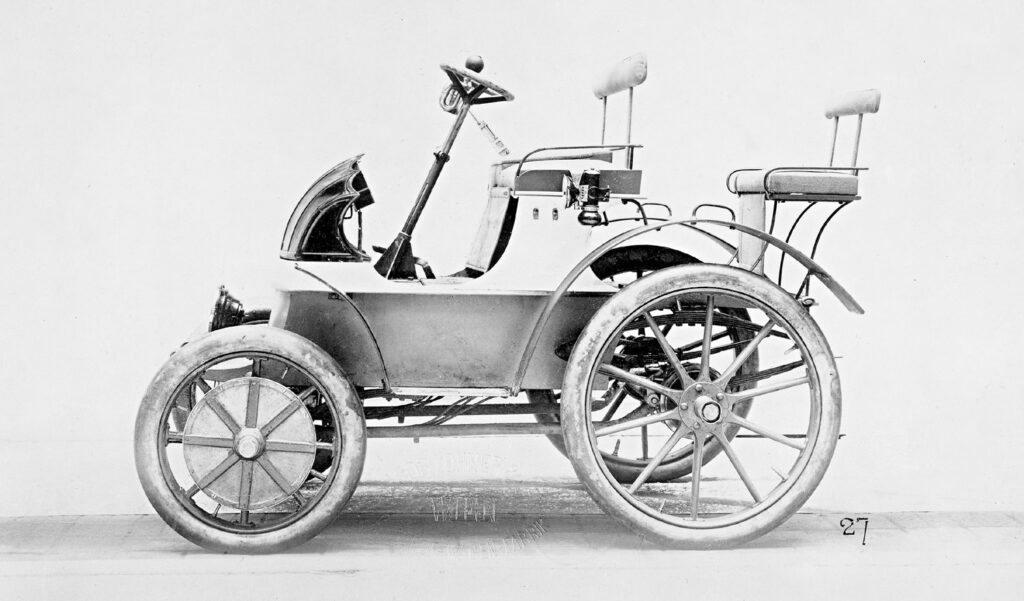
The car could be braked at all four wheels – by the motors at the front axle and with the aid of a mechanical strap brake at the rear axle.
The transmissionless front-wheel-drive electric vehicle made Porsche famous overnight. The rich and famous were the customers as the silent and clean electric car was more expensive than a comparable vehicle with a combustion engine.
Then a special extended wheelbase version was created and on September 23, 1900, Ferdinand Porsche set a record at the Semmering hill climb competition. He managed to cover 10 km (6.2 miles) over 400 m (1300 ft) climb in 14 minutes and 52.2 seconds. This translates to average speed of 40 kmh (25 mph). It was a sensational result at the time on a winding uphill gravel road. Also, imagine sitting in such a chair while taking curves:
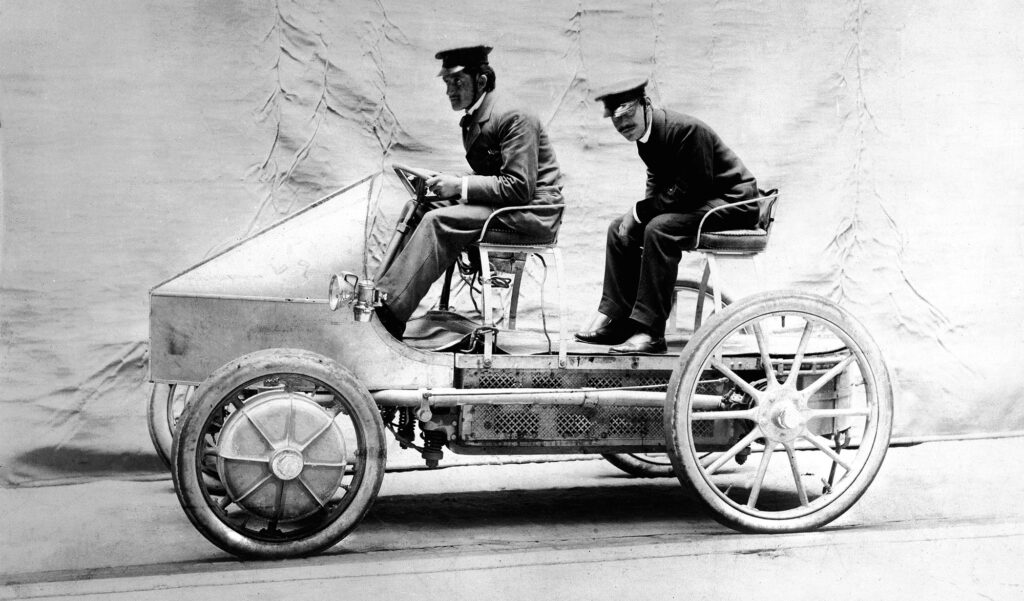
1900 4WD EV
Already in 1900, Porsche created the first 4-wheel-drive car. It was meant for competition use, so, he equipped it with a lot of batteries. With his 4WD EV, Porsche won the Exelberg race in 1901.
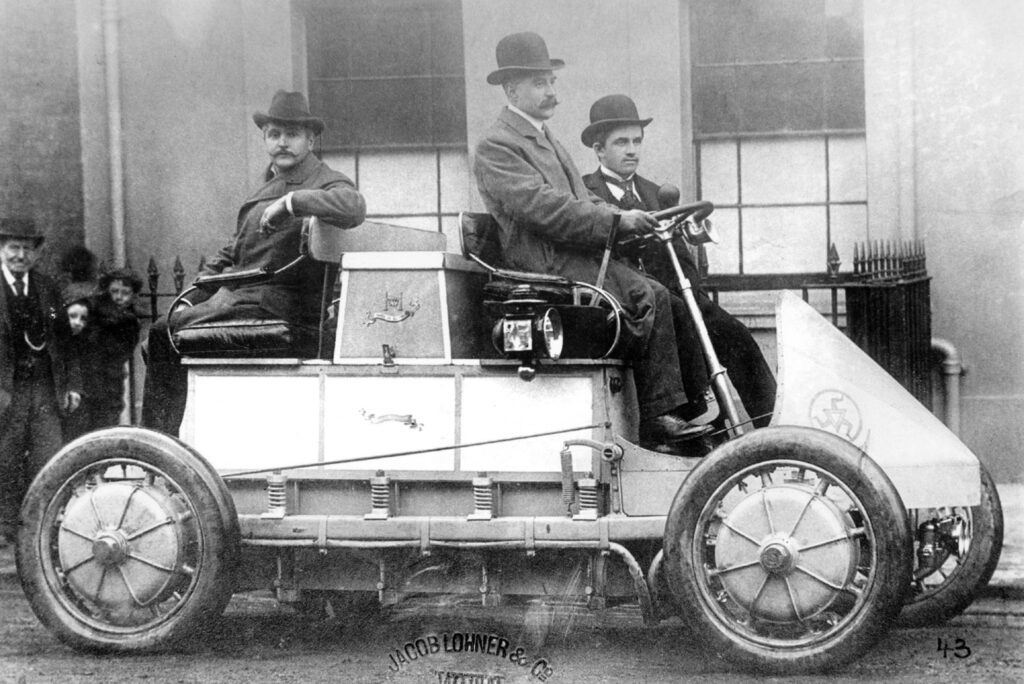
In 1900, F. Porsche also created the first hybrid car where the petrol engine ran a generator that provided electricity for the electric motors.
Porsche started to look at the direction of fully electric cars again after Tesla showed how quick the electric cars can be. In 2020, Porsche launched the Taycan, the benchmark among EVs.
